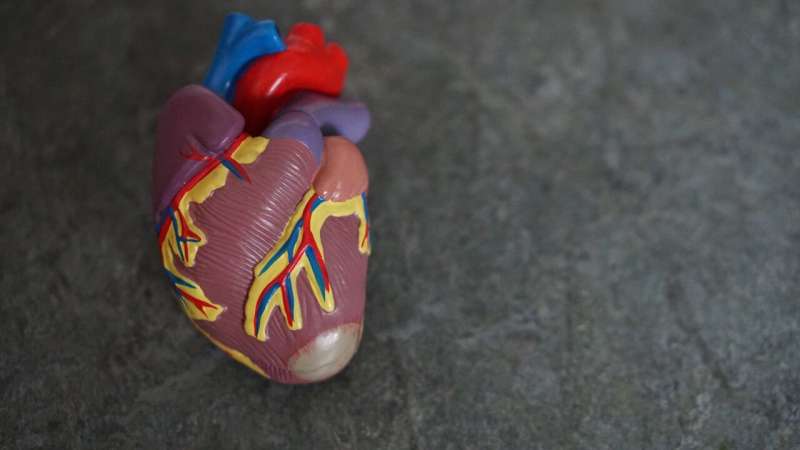Communication may guide family members decisions after sudden cardiac death

Improving communication among death investigators, health care professionals and family members after a relative’s sudden cardiac death may help relatives understand the cause of death and influence their decision to seek follow-up screening for inherited heart conditions, according to new research published today in í.
Sudden cardiac death occurs when the heart stops suddenly and unexpectedly, and it claims the lives of an estimated 4 to 5 million people globally each year. In the U.S. alone, sudden cardiac death was cited as a cause in more than 436,000 deaths in 2020, according to the American Heart Association’s 2023 heart disease and stroke statistics. In people younger than age 45, sudden cardiac death is usually due to an underlying heart condition, such as a structural abnormality in the heart or an irregular heart rhythm. These heart conditions may be passed down through genes from parents to their children.
“Sudden cardiac deaths in young people are rarely expected, leaving families with many questions,” said the study’s co-lead author Katherine S. Allan, Ph.D., M.A.Sc., a researcher in the division of cardiology at Unity Health Toronto—St. Michael’s Hospital in Toronto, Canada. “Family members of sudden cardiac death victims rely on communication from death investigators and health care professionals to find answers about their relative’s cause of death. This can have a profound impact on families, including their ability to grieve and come to terms with the loss.”
2020 joint American Heart Association/American College of Cardiology guidelines recommend genetic testing for all first-degree relatives of people who died from sudden cardiac death to identify other family members who may also be at risk for sudden cardiac death.
In Canada, the legislative mandate is for coroners to investigate all sudden and unexpected deaths, and coroners are responsible for informing families of their conclusions. Yet, coroners do not receive formal training about the best ways to communicate this information to families to promote understanding or potential additional family risk. The study notes that little is known about the role of primary care professionals in communicating risk to families or facilitating genetic screening.
Each state in the U.S. has different requirements for which deaths require investigation or autopsy.
Researchers interviewed parents, siblings, adult children and spouses of 12 people—ages 12 to 45 years—who died from sudden cardiac death between 2014 and 2018 in Ontario, Canada’s most populous province which includes Toronto. The interviews focused on family members’ experiences learning about their relative’s cause of death, understanding their own risk of heritable heart conditions and deciding whether to pursue follow-up screening.
The study found that families of people who had died from sudden cardiac death rely on communication from death investigators and health care professionals for two main reasons: 1) to find answers about their relative’s cause of death, and 2) to understand their own risk for an inherited heart condition.
“Our findings suggest that the communication formats, methods and processes, along with other external factors, such as funeral costs and unpaid time off from work, may influence family members’ decisions to seek follow-up screening,” Allan said. “More families may go for follow-up screening if their risk is adequately explained by a health care professional and if other external factors are manageable.”
Several participants described feeling a range of emotions in the “whirlwind” following their relative’s sudden cardiac death, emotions that impacted their ability to go about their daily routine, let alone search for and process answers. Grief also influenced families’ ability to understand and process information received about the cause of death and their own risk for heritable cardiac conditions. Families reported that receiving information in multiple complementary formats, such as in-person, by phone and written materials, was beneficial, due to the difficulty retaining, understanding and processing the information both during and after their relative’s sudden cardiac death.
“These findings emphasize the importance that any death investigator and health care professional who interacts with families after the death of a loved one should provide clear and accurate information about the cause of death in plain language, answer questions as they arise and understand that this discussion may need to be repeated multiple times due to the ‘fog of grief’ experienced by bereaved families,” Allan said.
An accompanying editorial by Kimberly Dukes, Ph.D., and Saket Girotra, M.D., M.S., notes that the study provides important lessons on the best ways to communicate with family members regarding their own vulnerability to sudden cardiac death while they are also dealing with the trauma of deep personal loss.
“The events surrounding (American football player) Damar Hamlin highlighted the anxiety many of us felt during the initial days, given the uncertainty of his recovery from a cardiac arrest. Mr. Hamlin lived but most who experience sudden cardiac arrest die, leaving family members with even greater uncertainty about the cause of sudden cardiac death and their own risk,” they wrote in the editorial.
This study provides “important insights regarding the families’ pursuit of information and their experience of communication after a sudden death, which are vital for preparing health care professionals and death investigation teams to better support them at a profoundly difficult time.”
Despite this study being conducted in one Canadian province, authors say the findings may be transferable to other populations. Other limitations include that all families volunteered their participation; this investigation began 3 to 5 years after a sudden cardiac death, which could lead to potential recall bias in participants’ responses. In addition, no families of sudden death fatalities under age 12 were included in the study, and surviving families of younger victims may have different experiences.
Co-authors are Katherine L. Mason; Jodi Garner, M.Sc.; Katie N. Dainty, Ph.D.; Dirk Huyer, M.D.; Kris Cunningham, Ph.D., M.D.; Paul Dorian, M.Sc., M.D.; and Krystina B. Lewis, R.N., M.N., Ph.D.
More information:
“It’s Overwhelming With the Grief” A Qualitative Study of Families’ Experiences When a Young Relative Dies of Sudden Cardiac Death, Circulation Cardiovascular Quality and Outcomes (2023). DOI: 10.1161/CIRCOUTCOMES.122.009524
Journal information:
Circulation: Cardiovascular Quality and Outcomes
Source: Read Full Article
